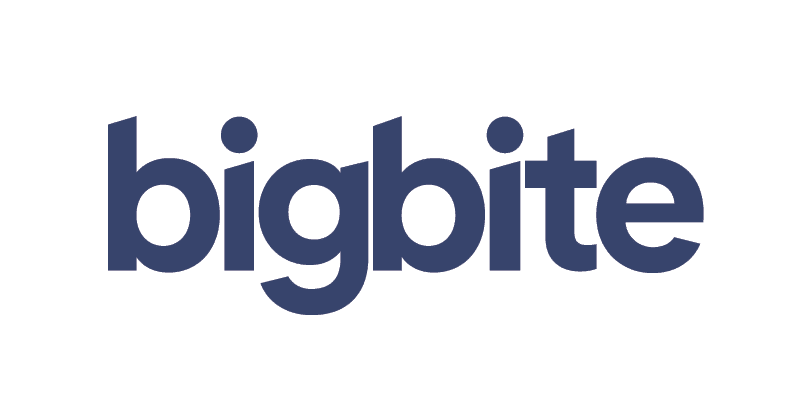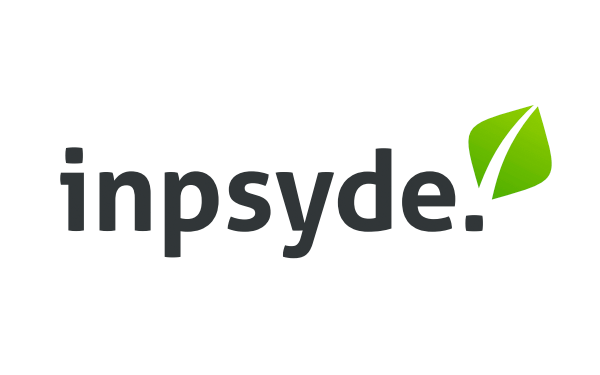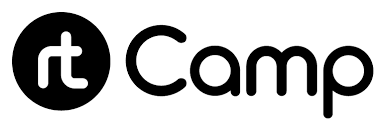

STATE OF ENTERPRISE WORDPRESS 2023
Throughout 2023, we’ve surveyed over 100 enterprise brands across the world to find out how large-scale businesses are currently leveraging WordPress for their business needs.
With responses from organisations such as Macy’s, the V&A and The Times, the results give an up-to-date snapshot of why household names and major publishers depend on the platform, and how it could be strengthened in the future to offer an even wider range of advantages.

The definition of enterprise often varies between countries and sectors, so for the purposes of this survey we’ve determined enterprise organisations to be or more of the following: a high profile brand, a publisher with a national and/or global audience, a corporate conglomerate.
For a clearer overview of the type of organisations that have taken part, we’ve highlighted aggregated and anonymised profile data below.
GEOGRAPHY
Over half of the survey respondents (53%) indicated that their organisation was primarily based in Europe, Middle East, and Africa (EMEA). In addition, 36% of respondents indicated that their company was headquartered in North America and Latin America (NORAM), 7% located in Asia Pacific region (APAC) and a further 4% in Latin America (LATAM).
INDUSTRY SECTORS
Publishing and media provided the highest volume of survey responses, with 32% choosing this response, followed by 24% from the technology industry, and 12% from marketing/advertising.
RESPONDENT DEPARTMENT
People in leadership positions proved to be the most substantial group of responders (40%) with engineering/product development closely behind with 35%. Marketing and publishing/editorial teams also responded, with a combined response of 26%.
Unique WordPress site visitors per month
We collected traffic data to help us understand the effectiveness of the website at attracting an audience. 15% of respondents recorded over 10 million unique site visitors per month to their WordPress website, however the most popular response was fewer than 500,000 (40%).
CMS / DXP STACK
When asked ‘Does your organisation use any other CMS / DXP in addition to WordPress?’ the majority of respondents (38%) indicated that WordPress was the only CMS used at their organisation. A further 17% of respondents indicated that the organisation also had a bespoke solution in use, and a further 9% had a Drupal install in addition to WordPress.
| Response | Percentage |
|---|---|
| No – we only use WordPress | 38% |
| Bespoke solution | 17% |
| Drupal | 9% |
| Optimizely | 4% |
| Adobe Experience Manager | 4% |
| Contentful | 4% |
| Methode | 3% |
| Sitecore | 3% |
| Glide | 2% |
| Acquia | 2% |
| Umbraco | 1% |
| Wagtail | 1% |
| SPIP | 1% |
| TYPO3 | 1% |
| Prismic | 1% |
| Joomla | 1% |
| Plone | 1% |
| Alfresco | 1% |
| Salesforce Commerce Cloud | 1% |
| Glide Publishing Platform | 1% |
| Custom | 1% |
| Oracle | 1% |
| Naviga | 1% |
| Squarespace | 1% |
| eZ Publish | 1% |
| IBM websphere | 1% |
| Hugo | 1% |
| Episerver | 1% |
WordPress can be utilised in a number of ways to help enterprises more effectively and efficiently create, collaborate and publish. Within this section of questions, we collected data to understand how enterprise organisations have integrated, maintained, and scaled the WordPress CMS over the years.
How does your organisation use WordPress?
Unsurprisingly, over 40% of respondents primarily use the platform to produce on-site content and publish news, while 33% use it to self-build pages and update existing content. Despite being originally developed as a simple blogging system, only 14% of enterprises continue to use it for that function, highlighting its significant evolution as a CMS.
Is your organisation using WordPress as a headless CMS?
Despite the focus on the benefits of headless WordPress over the last few years, over half of respondents (56%) favour traditional WordPress over a headless solution. 28% of respondents indicated that they do host a headless solution, and 16% were unsure.
How long has your organisation used WordPress?
87% of those surveyed have relied on the platform for at least two years, with the majority (59%) of respondents stating that they have used WordPress for five years or more.
How frequently does your organisation use WordPress?
Almost three quarters of respondents indicated that the WordPress CMS was used every single day at their organisation, and just 2% using it ‘less often’.
Which WordPress editor do you use?
Just 19% of the organisations taking part have continued to solely use the platform’s classic editor, while the remaining respondents have embraced its intuitive block editor solely, or alongside the classic editor.
Does the WordPress block editor make it easier than the classic editor for you to create and publish content?
Unsurprisingly, 80% of those surveyed had the opinion that the Gutenberg block editor made the publishing experience easier for their organisation, with the remaining 11% having seen no difference from the classic editor workflow.
Approximately how many people in your organisation use the WordPress CMS to create/edit content?
38% of respondents signalled that 50 people or more in each organisation use the WordPress CMS to publish content, compared to 16% which had five or less users.
IS YOUR WORDPRESS SYSTEM INTEGRATED WITH ANY OF THE FOLLOWING?
The ability to extend core WordPress functionality with plugins and integrations is one of the biggest opportunities available to brands, and this was reinforced with only 5% of respondents stating that they did not integrate with any other software.
Does your organisation contribute to open source WordPress projects?
62% of participants stated that they did not contribute to open source WordPress projects, with 38% of respondents indicating that they did, either frequently or infrequently.
Within the competitive CMS landscape, there can be a multitude of reasons why brands choose a specific solution, however our findings in this survey show a clear commonality when it comes to the most important factors including cost, functionality and usability.
Which department was the key decision maker when it came to working with WordPress?
Our survey highlighted that for 38% of enterprise organisations, IT and engineering departments have ultimately made the decision to work with WordPress, signalling major technical confidence in the platform.
How important were the following factors in choosing WordPress over THE other solutions?
With 70% of respondents citing it as very important, functionality is the number one priority for the enterprises we surveyed, alongside extensibility, usability, performance and scalability. Multilingual capabilities were not perceived as a priority, with 57% of respondents choosing ‘not important’ for this functionality.
Our findings around costs and maintenance are mixed, and largely illustrate that initial build charges vary significantly depending on size, infrastructure, and custom capabilities.
What was the approximate set up/design and build cost of your current WordPress solution?
Initial build charges vary significantly depending on size, infrastructure, and custom capabilities, with respondents noting that costs have been from anywhere under $50,000, to $1million plus. 20% of respondents were unsure on the initial build cost of their WordPress website.
Does that cost cover ongoing maintenance?
56% of respondents recorded that these costs were not inclusive of ongoing maintenance, and 44% stated that the initial cost included all updates and maintenance.
Do you have an in-house engineering team that manages WORDPRESS?
Almost three quarters of those surveyed indicated that they manage the maintenance of their WordPress solutions via internal development resources, with the remaining 26% relying on external agencies. Smaller teams make up half of the data, with 1-5 developers.
Where do you host your WordPress sites?
A combined majority of 39% respondents indicated that they utilise the hosting services of industry leaders – WordPressVIP and WP Engine.
| Response | Percentage |
|---|---|
| WordPress VIP | 21% |
| WP Engine | 18% |
| Own servers | 16% |
| AWS | 15% |
| Pantheon | 10% |
| Cloudways | 4% |
| Kinsta | 3% |
| WordPress.com | 2% |
| Mediatemple | 1% |
| Savvii | 1% |
| GCP | 1% |
| Naviga AWS environment | 1% |
| Pressable | 1% |
| Rocket.net | 1% |
| Siteground | 1% |
| Nexcess | 1% |
| Layershift | 1% |
| Ocean | 1% |
| Nestify | 1% |
Please indicate which price range your monthly hosting costs falls into
Costs are fairly evenly split across three price bands of under $2,000 (41%), between $2,000 – $5,000 (30%), and over $5,000 (30%), stipulating a range of website traffic.
Do you monetise your WordPress site?
The majority of enterprise brands reported that they are monetising their sites via advertising (21%), affiliate marketing (16%) and subscriptions and paywalls (22%).
Do you feel that your WordPress site is delivering return on investment, either in terms of revenue generation or time and resource savings?
Arguably the most important factor, almost three quarters of the brands surveyed feel that their WordPress website delivers good or excellent return on investment.
Our survey unearthed a wide range of suggestions for new features and platform improvements, unsurprisingly, with a notable number of participants in favour of AI integrations. Additionally, the demand for real-time collaborative editing is evident throughout our survey responses, which is a key focus for the next phase of WordPress platform roadmap.
*Free form text responses were also used in this section to allow us to compare future survey responses, but are not included in the published results.
Do you foresee that your organisation will continue to use WordPress?
An overwhelming majority of 91% of the brands surveyed confirmed that they’re happy with the platform, and will continue to utilise WordPress in the future, indicating a robust vote of confidence in WordPress among the organisations polled.
How likely is it that you would recommend WordPress to other enterprise organisations? (scored out of 10)
Overall, the satisfaction among enterprise users is incredibly high. 72% of respondents said that they would be very likely to recommend WordPress to other enterprise organisations, responding with an eight, nine or 10 on the scale.
As well as capturing a moment in time, the findings shared in this report encapsulate the evolution of the WordPress platform, which today is not only the world’s most popular CMS, but also a leading choice for major brands and publishers.
Examining participant departments, leadership positions constitute the largest group of respondents at 40%, emphasising the strategic importance of WordPress within enterprise level organisations. Engineering/product development closely follows at 35%, showcasing the platform’s relevance in technical domains, and marketing and publishing/editorial teams collectively comprise 26%, reflecting the cross-functional impact of WordPress across teams and departments.
The number of unique WordPress site visitors per month reveals a varied audience reach, with 40% recording fewer than 500,000 visitors and 15% exceeding 10 million, illustrating WordPress’s adaptability to organisations of different sizes and audience engagement strategies.
Highlighting that it’s primarily chosen for its functionality, extensibility, and usability, the data also shows that WordPress delivers an exceptionally high level of satisfaction, with more than 9 in 10 enterprises confirming that they’ll continue to use WordPress in the future. This not only suggests a very favourable outlook for enterprise WordPress, but coupled with the number of brands who are likely to recommend it to others, suggests that we’ll see enterprise adoption increase over the coming months and years.
In essence, the State of Enterprise WordPress 2023 findings not only confirm WordPress’s widespread adoption for enterprise brands, but also highlight its adaptability, versatility, and significance across geographical, industrial, departmental, and technical dimensions within a range of organisations. The platform continues to be an excellent choice for enterprise brands, and we look forward to comparing these results with the 2024 survey.
THE STATE OF ENTERPRISE WORDPRESS SURVEY
The State of Enterprise WordPress survey is a collaborative effort from key brands in the enterprise WordPress community. The survey reflects the community’s commitment to a shared journey of advancing the enterprise WordPress space.
SUPPORTED BY
Thank you to all of the enterprises that participated in the State of Enterprise WordPress 2023 survey – if you would like to take part in the 2024 survey, please submit the form below.
For press enquiries, please contact marketing@bigbite.net
For all other enquiries, please contact hello@bigbite.net













